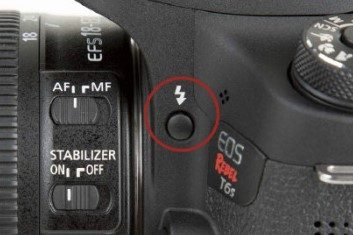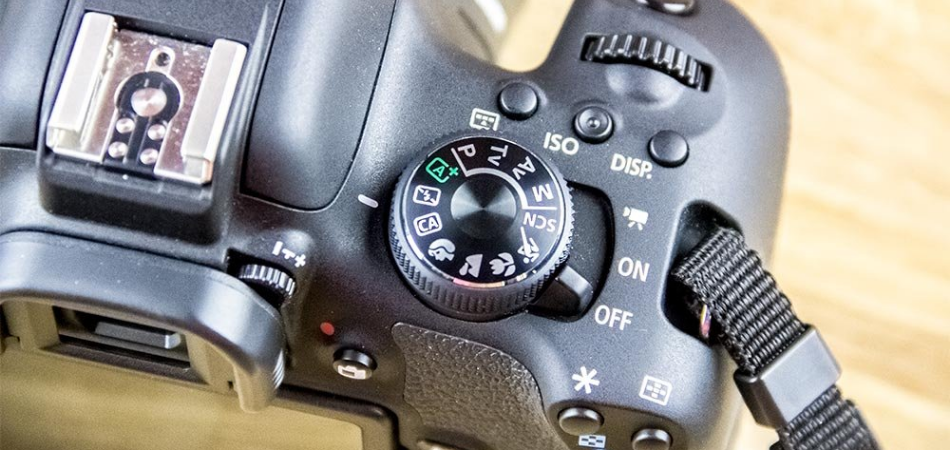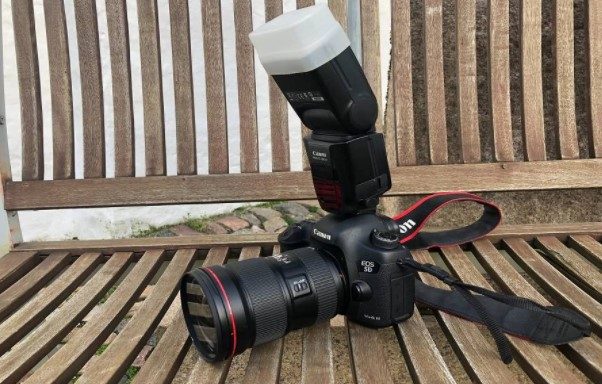How to turn off flash on a Canon camera? Sounds too basic to discuss? The truth is, this is one topic that’s challenging to many beginners since Canon has quite a number of camera models. And it gets somewhat daunting to figure out the exact procedure of turning off the flash.
Before we dig deep, why would you want to know how to turn off Flash on a Canon camera to begin with? Most Canon cameras have a built-in flash that can be set to ON, OFF, or Auto- depending on user preference. As a photographer, you need to know when to and not to use your Canon camera flash.
Keep reading to find out the different ways you can follow to turn off your Canon camera flash.
Where Is The Flash Button On A Canon Camera?
Canon camera models have a dedicated flash button on the front part of the camera between the mic and the lens. This button on a Canon camera provides quick and easy access to the camera flashlight. A single press of the flash button triggers the built-in flash and sets it in a ready position.
To turn off the flash, press down the flashlight assembly back to its closed position.
While there is a dedicated flash button, you can also use the dial button to set different flash settings such as “flash OFF” and scene intelligent auto mode. This button is essential for those working in the creative photography zone since they often turn on and off the camera flash.
How To Turn Off Flash On Canon Camera
Imagine taking photos at a party or places where your camera flash would draw too much attention. Also, you don’t need flash on broad daylight, right? In such situations, turning off your camera flashlight is the best step to take. Canon has numerous camera models with different ways of turning off the flashlight.
Here is how to turn off Flash on Canon camera:
Method 1: Turn off Flash using the Dial
The flash symbol on any camera is the most straightforward feature to understand. It usually is a lighting arrow with a line through it; this means “no flash.” If you look closely at your Canon camera dial, you’ll see it.
To turn off flash using the dial, you need to turn your camera dial one click in a clockwise direction until the “no flash” symbol is in line with the white mark on the camera chassis. This is often referred to as flash Off mode.
Method 2: Turn off Flash using the display
- Step 1: Turn on your camera.
- Step 2: Press the [Menu Button] and navigate to [Flash Control].
- Step 3: Press [Set].
- Step 4: [Flash Firing] option will appear, select [Disable] and press [Set] again.
Also Read: What Are The Canon 70D Focusing Issues & How to Fix Them?
What Does The Flash Do On A Canon Camera?
Whether you are an amateur or pro photographer, a camera flash is indispensable for the best photography.
Camera flash on Canon, either built-in or add-on, provides additional light when shooting in lowlight conditions. It lets you attain a well-balanced exposure in dark settings, allows freezing of subjects moving quickly, and also triggers or controls other flashlight sources.
The built-in camera flash provides a quick and convenient way to light up too-dark scenes. Here are some Canon camera flash tips for better photography:
- Don’t get too close – If your Flash is too close to the subject, the flashlight may not perfectly illuminate the entire subject, thus leaving shadows on some parts. Alternatively, the picture may get overexposed. You can multiple test shots as you change your distance from the subject.
- The effectiveness of your flash depends on the lens and ISO setting – The ISO settings determine the level of your camera sensitivity to light. For example, an 18mm lens requires a flash range of about 3 – 8 ft.
Pro tip: Set a higher ISO speed value or use an external flash with more power to light up a faraway subject.
- Use a slower shutter speed if the background is bright – Shutter speed refers to settings that regulate how long the camera shutter stays open, letting in light to the image sensor, thus exposing the photo. A low shutter speed allows your camera to take in more light; therefore, it requires little flash power to light up the subject.
- Look out for lens or lens hood shadows – When using long lenses, sometimes cast unwanted shadows on the subject. Take a test shot and adjust your position if necessary.
Frequently Asked Questions
Below are a few of your most frequently asked questions:
How do you turn off Flash on Canon EOS 2000D?
To set flash mode off on EOS 2000d, press the [Q] button to open the quick control settings on the screen. Using the cross keys, navigate and select flash settings. Next, rotate the dial button to cycle through the different flash settings. After that, press the set button to disable flash.
What Is Manual Flash?
Manual flash mode lets you regulate light intensity on your camera. It uses fractions. With manual flash, you can either set it to full power or adjust it to flashlight at a preferred fraction. For example, 0.5 manual flash mode setting is half the power of the entire flash.
How Many Flash Modes Does a Canon Camera Have?
Canon cameras usually have three flash modes: ON, OFF, and AUTO. You should use OFF mode when shooting in bright light or environments that do not allow flashlight.
In contrast, use ON mode for low light or dark conditions. If you’re unsure whether you need more light, use the AUTO mode to let your camera automatically fire a flashlight, depending on lighting conditions.
Final Words
Most modern digital cameras have various built-in technology. Some are quick to learn while others require a bit of time and regular use. In photography, there are times when you’ll need to turn off the flash on your camera to get good shots. Therefore, it is essential to learn how to do it.
In this article, we have outlined a few ways to turn off flash on a Canon camera. We hope you found this text informative. Remember, the decision to either use a camera flash or not entirely depends on you as the photographer. In some conditions, you may need a more potent than built-in flash; this is where external camera flash comes in handy.
Please be sure to leave your comments or questions in the section down below. Happy photography!!



